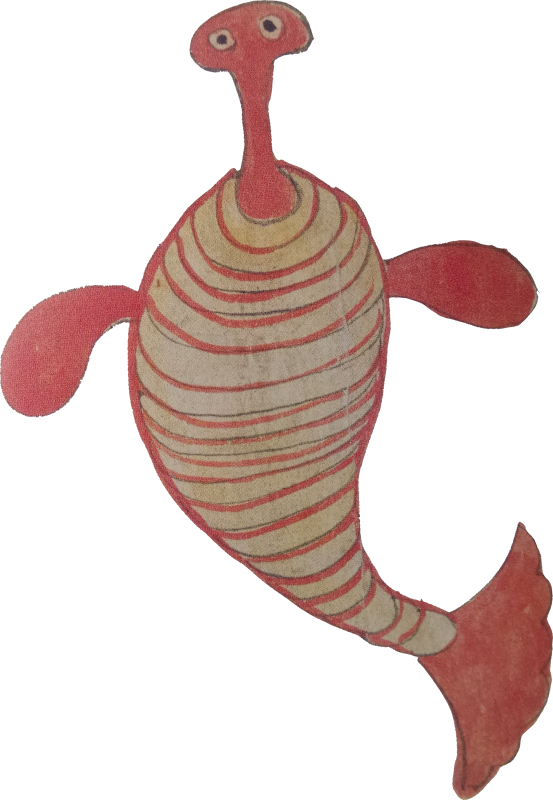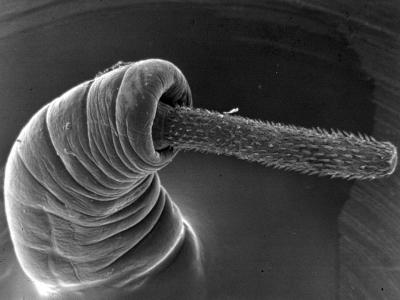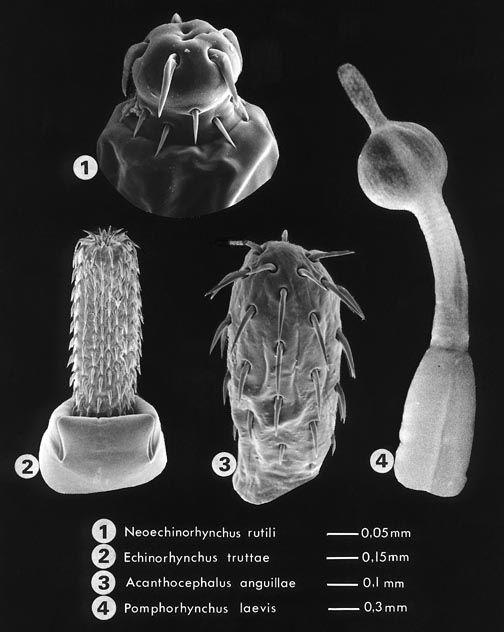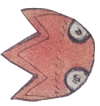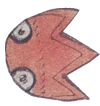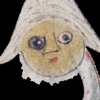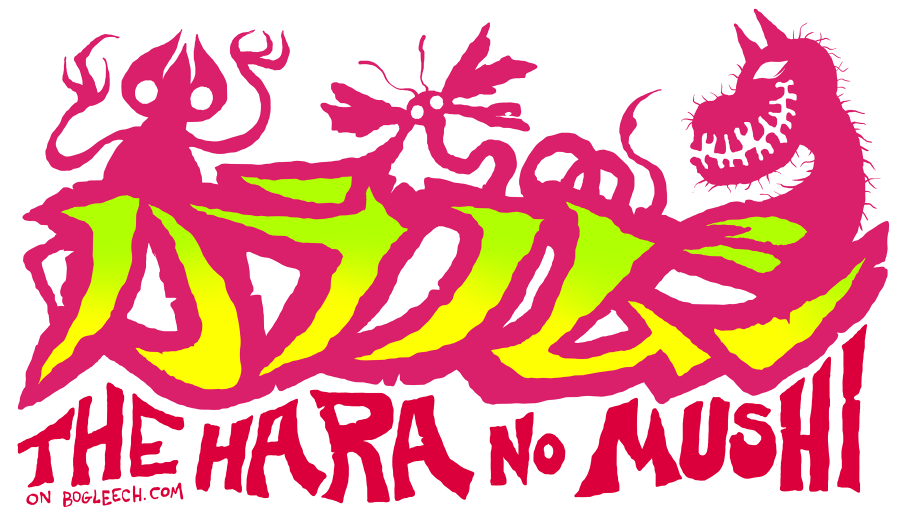
DAY TEN: TAIBYOU NO KESSHAKU
("Blood Mass of Great Sickness")
Written by Jonathan Wojcik, Researched and Translated by Rev Storm
Design Review:
One of my favorites in the book, what's not to love about that comical little turtle-head protruding from a flippery grubworm? It's such a funny little fella for a "Blood Mass of Great Sickness."TODAY'S REAL WORLD PARASITE:
Acanthocephalans
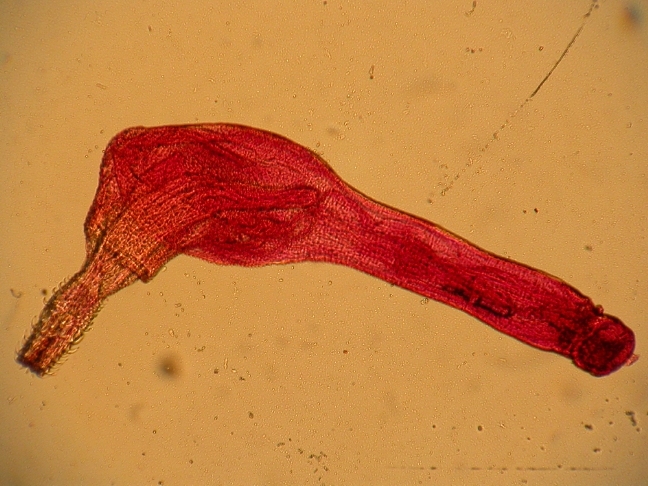
Taibyou no Kesshaku really has a lot in common with yesterday's gastric bot fly larvae, but anatomically, it also resembles a very different parasite known as a thorny headed worm. Nearly all members of this group use an arthropod such as an insect or a small, aquatic crustacean as their intermediate host, which of course must be eaten by whatever vertebrate species the thorny-head favors as its primary host. This is another that does not normally infect humans, but it does happen, especially in places where humans might drink unfiltered water or consume certain insects alive and uncooked.
Some Acanthocephala also have more than one intermediate host, in which case the first animal to swallow the infected shrimp or cockroach suffers the misfortune of a burrowing stage, like the larval tapeworm, which encysts somewhere in the body until swallowed by the next host. Once it finds itself in the stomach of its true final host, the parasite develops into the "thorny headed" adult stage of its namesake. How about a close-up!?
Sometimes, a thorny-head even gets overzealous enough to pull itself all the way out of the gut where it belongs, ending up somewhere in the abdomen between body organs where it's pretty much doomed to die if it can't find its way back, and having an entire dead animal breaking down somewhere between your kidneys and your liver is obviously pretty bad news.
The weirdest thing of all about these parasites? Molecular analysis places them as highly modified members of the ROTIFERS, normally microscopic filter-feeding animals!
